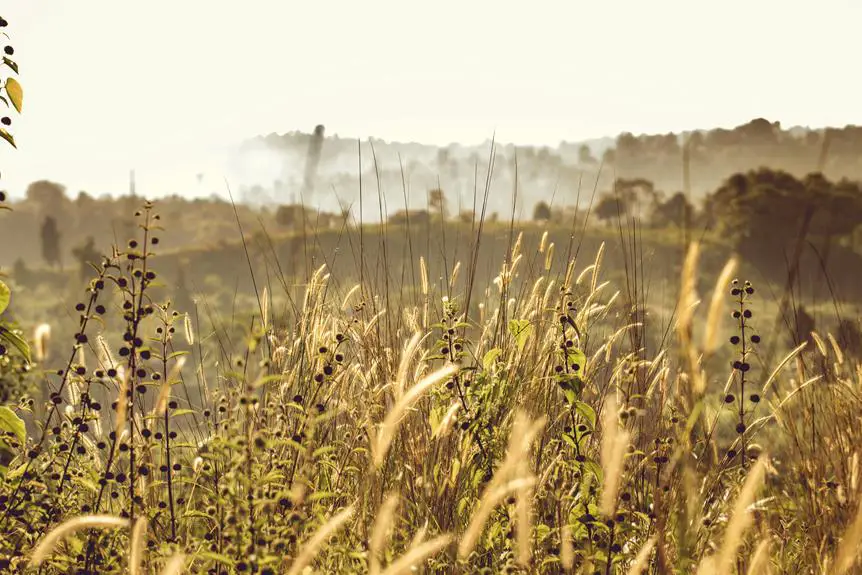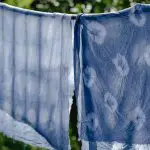Looking for the best fabric weed barriers for your landscaping needs? You're not alone.
Choosing the right fabric weed barrier can make a world of difference in maintaining a pristine and weed-free landscape. From durability and longevity to effectiveness in weed prevention, there are several key factors to consider when selecting the perfect fabric weed barrier for your landscaping project.
In this guide, we'll explore the different types of fabric weed barriers, compare materials, and delve into eco-friendly options.
By the end, you'll be equipped with the knowledge to make an informed decision and ensure that your landscaping remains beautiful and weed-free for years to come.
Key Takeaways
- Assess specific landscaping needs before choosing a fabric weed barrier.
- Understand the differences between fabric types for optimal weed barrier effectiveness.
- Prioritize durability and longevity when selecting a fabric weed barrier.
- Consider the environmental impact and sustainability benefits of the chosen fabric.
Types of Fabric Weed Barriers
When choosing fabric weed barriers for landscaping, you should consider the various types available and their specific applications. Weed barrier effectiveness varies depending on the type of landscaping fabric used.
Woven landscaping fabric is durable and allows for good water permeability, making it suitable for areas with heavy foot traffic.
Non-woven landscaping fabric, on the other hand, is effective at preventing weed growth and is ideal for use in garden beds and under mulch.
Another type is the biodegradable fabric, which offers weed control while decomposing over time, providing nutrients to the soil.
Each type serves a different purpose, so it's important to assess your specific landscaping needs before making a choice.
Understanding the differences between landscaping fabric types is crucial for achieving optimal weed barrier effectiveness. Woven, non-woven, and biodegradable fabrics each have their own advantages and applications in landscaping.
Material Comparison
To compare materials for fabric weed barriers in landscaping, assess their durability, permeability, and weed control effectiveness. The choice of material can significantly impact the success and longevity of your landscaping project.
Here's a comparison of common materials used for fabric weed barriers:
- Polypropylene: This material offers excellent durability and weed control effectiveness. It's easy to install, making it a popular choice for landscaping projects. However, it may not be as permeable as other materials, leading to potential waterlogging issues.
- Landscape Fabric: This fabric is known for its superior permeability. It allows air and water to reach the soil while effectively suppressing weed growth. However, it may not be as durable as polypropylene and requires careful installation techniques to prevent tearing.
- Woven Geotextiles: These heavy-duty fabrics provide exceptional durability and weed control. They're highly permeable, making them suitable for various landscaping applications. However, proper installation techniques are crucial to maximize their effectiveness.
- Recycled Materials: Fabrics made from recycled materials offer an environmentally friendly option. While these materials may provide adequate weed control, their durability and permeability can vary based on the specific composition.
When comparing materials, consider factors such as your specific landscaping needs, installation techniques, and the environmental impact of the chosen material.
Durability and Longevity
Assessing the durability and longevity of fabric weed barriers is essential for ensuring the long-term success of your landscaping project. When considering which fabric weed barrier to invest in, it's crucial to prioritize quality construction and best practices to maximize longevity and durability.
| Fabric Weed Barrier | Durability | Longevity |
|---|---|---|
| Woven Polypropylene | High | Long-term |
| Non-Woven Polyester | Medium | Medium-term |
| Spun-Bonded Polyethylene | Low | Short-term |
Woven polypropylene barriers offer high durability and long-term performance, making them an excellent choice for areas with heavy foot traffic or where durability is paramount. Non-woven polyester barriers provide decent durability and moderate longevity, suitable for less trafficked areas or temporary landscaping projects. On the other hand, spun-bonded polyethylene barriers, although cost-effective, offer low durability and short-term effectiveness, making them suitable for temporary solutions or areas with minimal wear and tear. Considering the durability and longevity of fabric weed barriers is crucial for making an informed decision that aligns with your landscaping needs and long-term goals.
Effectiveness in Weed Prevention
When it comes to choosing a fabric weed barrier for your landscaping, it's crucial to consider its effectiveness in preventing weed growth.
The durability and longevity of the barrier will play a significant role in its ability to keep weeds at bay.
Additionally, factors like installation and maintenance, as well as the environmental impact, will also contribute to the overall effectiveness of the fabric weed barrier.
Durability and Longevity
Considering the climate and soil conditions in your landscaping, choosing a fabric weed barrier with high durability is essential for effectively preventing weed growth. Quality materials and longevity are crucial factors in ensuring that the fabric weed barrier remains intact and functional.
When selecting a weed barrier, look for options that offer exceptional durability and weather resistance to withstand the elements in your specific region. A fabric weed barrier with long-lasting effectiveness will save you time and effort in the long run, providing reliable weed prevention for years to come.
Invest in a durable fabric that can endure the challenges of your landscaping environment, and you'll enjoy a low-maintenance and weed-free outdoor space.
- Superior durability ensures prolonged protection against weed growth
- Longevity guarantees lasting effectiveness in weed prevention
- Weather-resistant fabric withstands harsh environmental conditions
- Reliable weed prevention for years to come saves time and effort
Installation and Maintenance
To ensure effective weed prevention, focus on properly installing and consistently maintaining the fabric weed barrier in your landscaping.
When installing the fabric weed barrier, ensure that it's laid out smoothly and secured in place to prevent weed intrusion. Proper installation techniques include overlapping the edges and securing them with landscape pins to prevent gaps where weeds can grow through.
Additionally, maintaining the barrier involves regularly checking for any tears, punctures, or signs of wear and promptly repairing them to uphold its effectiveness in weed prevention. Clearing any debris or mulch that may accumulate on the fabric is also essential for proper maintenance.
Environmental Impact
Maximize the fabric weed barrier's effectiveness in weed prevention by assessing its environmental impact.
When considering the environmental impact of fabric weed barriers, it's important to weigh their effectiveness in preventing weed growth against their potential impact on ecosystems.
Here's what to consider:
- Impact on ecosystems: Evaluate how the fabric weed barrier may affect the local ecosystem, including soil health and the balance of native plant and animal species.
- Sustainability benefits: Look for barriers made from sustainable materials, such as biodegradable fabrics or recycled plastics, to minimize environmental impact.
- Long-term effects: Consider how the use of fabric weed barriers may impact soil quality and biodiversity over time.
- Proper disposal: Ensure that the fabric weed barrier can be disposed of responsibly, without adding to environmental pollution.
Installation and Maintenance
When it comes to installing and maintaining fabric weed barriers, proper techniques are crucial for effective weed prevention.
You'll want to ensure that the fabric is installed without any gaps or overlaps to maximize its effectiveness.
Additionally, long-term maintenance tips such as regular inspections and repairs will help extend the durability and effectiveness of the weed barrier.
Proper Installation Techniques
Properly installing fabric weed barriers requires carefully preparing the soil and securing the fabric to prevent weed growth.
Start by clearing the area of any existing weeds and debris.
Then, follow these essential steps to ensure a successful installation:
- Proper Anchoring Methods: Secure the fabric with landscape pins or staples to prevent it from shifting or moving in windy conditions.
- Soil Preparation Techniques: Level the soil and remove any rocks or sharp objects that could puncture the barrier. This will ensure a smooth surface for the fabric.
Long-Term Maintenance Tips
To ensure the longevity and effectiveness of your fabric weed barrier, consistently monitor for any signs of shifting or damage. Regularly inspect the barrier for tears, punctures, or areas where weeds may be starting to penetrate. Promptly address any issues by repairing or replacing the barrier as needed to maintain effective weed control.
Additionally, be mindful of any accumulation of mulch or soil on top of the fabric, as this can provide a medium for weed growth. Proper landscape care includes regularly removing debris and maintaining a clean surface to maximize the barrier's performance.
Durability and Effectiveness
Regularly inspect your fabric weed barrier for tears, punctures, or signs of weed penetration to ensure its durability and effectiveness in keeping your landscaping weed-free. Conducting durability testing and evaluating fabric strength are essential for maintaining a long-lasting weed barrier.
Here are some key points to consider for installation and maintenance:
- Check for any fraying edges or weak spots that may compromise the barrier's effectiveness.
- Secure the barrier firmly in place to prevent shifting or tearing, ensuring maximum weed protection.
- Clean the surface of the barrier regularly to prevent debris buildup, which can lead to weed growth.
- Consider using additional layers of mulch or rocks over the barrier to provide extra protection and enhance its durability.
Eco-Friendly Options
You can consider using an eco-friendly fabric weed barrier for landscaping to minimize environmental impact. There are sustainable solutions and green alternatives available that can effectively control weed growth while being gentle on the environment. Eco-friendly weed barriers are typically made from natural materials such as jute, hemp, or recycled textiles. These materials are biodegradable, which means they break down over time, reducing their impact on the environment.
When choosing an eco-friendly fabric weed barrier, look for options that are free from harmful chemicals and dyes, as these can leach into the soil and water supply.
Opting for an eco-friendly fabric weed barrier not only helps to support a healthier environment but also promotes sustainable landscaping practices. These barriers can be just as effective as traditional options while reducing the use of non-renewable resources. By using eco-friendly options, you can contribute to a more sustainable and eco-conscious approach to landscaping, making a positive impact on the environment.
When selecting a fabric weed barrier, consider the long-term benefits of choosing an eco-friendly option for your landscaping needs.
Cost Considerations
Consider the initial investment when incorporating fabric weed barriers into your landscaping plans, as cost considerations play a significant role in long-term maintenance and effectiveness.
When evaluating the cost effectiveness of fabric weed barriers, keep in mind that while they may require a higher initial investment, they can lead to long-term savings in maintenance and upkeep.
Here are some cost considerations to keep in mind:
- Initial Cost: Fabric weed barriers may have a higher initial cost compared to traditional mulching or chemical weed control options.
- Long-Term Savings: Despite the higher initial investment, fabric weed barriers can lead to long-term savings by reducing the need for frequent maintenance and weed removal.
- Alternative Options: Consider the alternative options available for weed control, such as mulching or chemical treatments, and compare their long-term costs with those of fabric weed barriers.
- Effectiveness: Evaluate the effectiveness of fabric weed barriers in preventing weed growth and compare it to the effectiveness of alternative methods to determine the best long-term cost-effective solution for your landscaping needs.
Frequently Asked Questions
Can Fabric Weed Barriers Be Used in Areas With Heavy Foot Traffic or Vehicle Traffic?
In heavy traffic areas, fabric weed barriers are durable options for landscaping design. They provide effective weed control and help maintain the aesthetics of your outdoor space. However, for heavy foot or vehicle traffic, consider reinforced barriers for optimal durability.
Are There Any Fabric Weed Barriers That Are Specifically Designed to Prevent the Growth of Invasive or Particularly Stubborn Weeds?
When it comes to weed prevention, look for fabric durability and invasive weed control. The best fabric weed barriers are designed to prevent the growth of stubborn weeds and offer excellent fabric permeability.
How Do Fabric Weed Barriers Affect Soil Health and Drainage in Landscaping Applications?
Fabric weed barriers can improve soil health by reducing erosion and retaining moisture. They impact water drainage positively by allowing water to pass through while preventing soil compaction. Choosing the right fabric is crucial for balancing these factors.
Can Fabric Weed Barriers Be Used in Conjunction With Mulch or Other Landscaping Materials?
You can use fabric weed barriers in conjunction with mulch and other landscaping materials. This combination ensures long-term effectiveness in weed prevention. The fabric allows water and nutrients to pass through while keeping the area weed-free.
Are There Any Fabric Weed Barriers That Are Specifically Designed for Use in Vegetable Gardens or Other Edible Landscaping?
When choosing fabric weed barriers for raised beds or vegetable gardens, look for options specifically designed for edible landscaping. These barriers provide effective weed control while allowing water and nutrients to reach your plants.
- How Does Ring Spun Cotton Affect Garment Fit and Shape Retention? - August 13, 2024
- What Are the Challenges in Producing Ring Spun Cotton? - August 13, 2024
- Is Ring Spun Cotton Suitable for Plus-Size Clothing? - August 13, 2024







